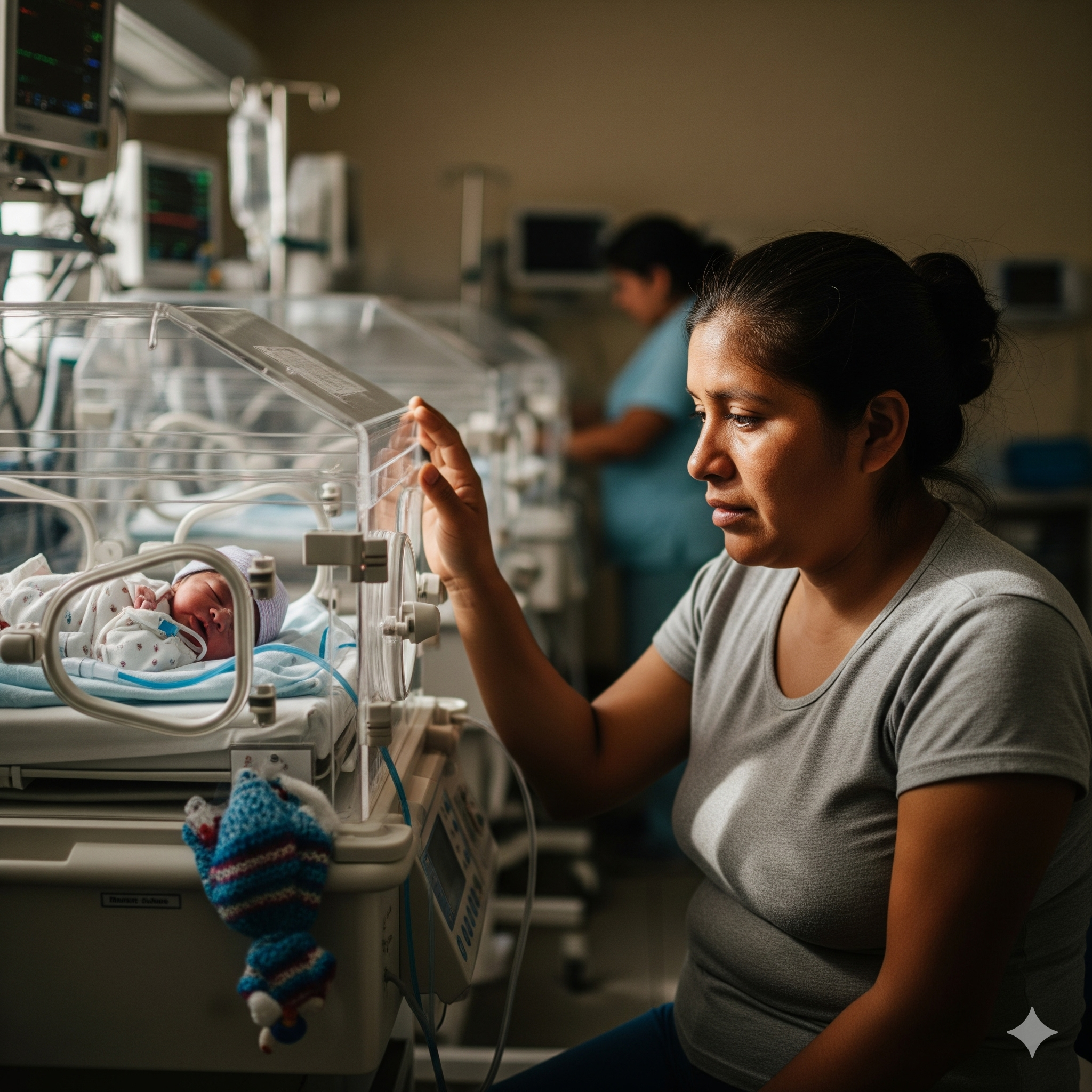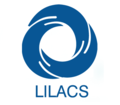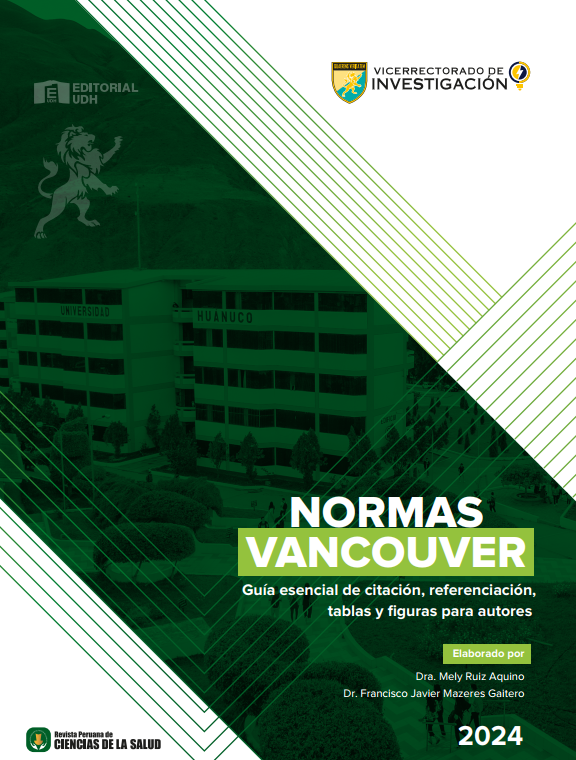Características sociodemográficas y depresión posparto en madres de neonatos en cuidados intensivos Perú, 2024
DOI:
https://doi.org/10.37711/rpcs.2025.7.3.9Palabras clave:
madres, depresión , neonato, cuidados intensivos, salud públicaResumen
Objetivo. Determinar las características sociodemográficas asociadas a la depresión posparto en las madres de los neonatos en cuidados intensivos del Hospital Nacional Guillermo Almenara Irigoyen, Lima (Perú), 2024. Métodos. Se llevó a cabo un estudio cuantitativo, no experimental, de alcance comparativo y medida transversal. La muestra fue censal y estuvo conformada por 180 madres de neonatos en cuidados intensivos. El instrumento aplicado fue la escala de depresión postnatal de Edimburgo. Para el análisis inferencial fueron usadas las pruebas chi-cuadrado y tau-b de Kendall. Resultados. El 47,7 % del total de madres tenían de 28 a 36 años, el 72,2 % laboraba, el 78,3 % procedían y residían en Lima; así mismo, el 97,8 % declaró tener servicios básicos. La depresión posparto se encontraba presente en el 60,6 % de la población estudiada. Existió asociación entre la depresión posparto y la edad (p = 0,034) y el lugar de residencia (p = 0,001) Conclusiones. Se determina que las características sociodemográficas (edad y lugar de residencia) se encuentran asociadas a la depresión posparto de madres de neonatos en cuidados intensivos del Hospital Nacional Guillermo Almenara Irigoyen.
Descargas
Referencias
1. Dimcea DA-M, Petca R-C, Dumitrascu MC, Sandru F, Mehedintu C, Petca A. Postpartum Depression: Etiology, Treatment, and Consequences for Maternal Care. Diagnostics [Internet]. 2024 [Consultado el 12 de junio de 2025];14(9):865. doi:10.3390/diagnostics14090865
2. Tambelli R, Tosto S, Favieri F. Psychiatric Risk Factors for Postpartum Depression: A Systematic Review. Behavioral Sciences [Internet]. 2025 [Consultado el 12 de junio de 2025];15(2):173. doi:10.3390/bs15020173
3. Dessì A, Pianese G, Mureddu P, Fanos V, Bosco A. From Breastfeeding to Support in Mothers’ Feeding Choices: A Key Role in the Prevention of Postpartum Depression? Nutrients [Internet]. 2024 [Consultado el 14 de junio de 2025];16(14):2285. doi:10.3390/nu16142285
4. Yaqoob H, Ju X, Bibi M, Anwar S, Naz S. A systematic review of risk factors of postpartum depression. Evidence from Asian culture. Acta Psychologica [Internet]. 2024 [Consultado el 16 de junio de 2025];249:104436. doi:10.1016/j.actpsy.2024.104436
5. Zhang Y, Liu X, Liu M. Multidimensional influencing factors of postpartum depression based on the perspective of the entire reproductive cycle: evidence from western province of China. Soc Psychiatry Psychiatr Epidemiol [Internet]. 2024 [Consultado el 16 de junio de 2025];59:2041–2048. doi:10.1007/s00127-024-02686-2
6. Froeliger A, Deneux-Traraux C, Loussert L, Bouchghoul H, Madar H, Sentilhes L. Prevalence and risk factors for postpartum depression 2 months after a vaginal delivery: a prospective multicenter study. American Journal of Obstetrics and Gynecology [Internet]. 2024 [Consultado el 16 de junio de 2025];230:S1128-S1137. doi:10.1016/j.ajog.2023.08.026
7. Leveau-Bartra H, Chávez-Navarro J, Calle-Vilca L, Guerrero-Ortiz H, Mejia-Lengua C, Luján-Divizzia B, Leveau-Vásquez I, Medina-Vásquez N, Leveau-Vásquez H, Medina-Vásquez F. Factores asociados a la depresión posparto en puérperas de un hospital peruano. Clínica e investigación en Ginecología y Obstetricia [Internet]. 2024[Consultado el 17 de junio de 2025];51:100986. doi:10.1016/j.gine.2024.100986
8. Ramos M, Rivera L. Asociación entre depresión postparto y apoyo de la pareja en un centro materno infantil de Lima. Anales de la Facultad de Medicina [Internet]. 2022 [Consultado el 17 de junio de 2025];83:19-24. doi:10.15381/anales.v83i1.20562
9. Antúnez M, Martín N, Casilari J, Mérida F. Depresión posparto, análisis de los factores de riesgo y la intervención de Enfermería. Revisión bibliográfica. Enfermería Cuidándote [Internet]. 2022 [Consultado el 17 de junio de 2025];5:19-29. doi:10.51326/ec.5.3.2558670
10. Alhaj Ahmad M, Al Awar S, Sayed Sallam G, Alkaabi M, Smetanina D, Statsenko Y, Zareba K. Biopsychosocial Predictors of Postpartum Depression: Protocol for Systematic Review and Meta-Analysis. Healthcare [Internet]. 2024 [Consultado el 17 de junio de 2025];12(6):650. doi:10.3390/healthcare12060650
11. Kim H. Predictive Analysis of Postpartum Depression Using Machine Learning. Healthcare [Internet]. 2025 [Consultado el 18 de junio de 2025];13(8):897. doi:10.3390/healthcare13080897
12. Cho M, Lee MH. Predictors of Postpartum Depression in Korean Women: A National Cross-Sectional Study During the COVID-19 Pandemic. Healthcare [Internet]. 2025 [Consultado el 18 de junio de 2025];13(10):1128. doi:10.3390/healthcare13101128
13. Schenker J, Rumrill, Jr. P. Causal-comparative research designs. Journal of Vocational Rehabilitation [Internet]. 2004 [Consultado el 18 de junio de 2025];21(3):117-121. doi:10.3233/JVR-2004-00260
14. Savitz D, Wellenius G. Can Cross-Sectional Studies Contribute to Causal Inference? It Depends. American Journal of Epidemiology [Internet]. 2023 [Consultado el 19 de junio de 2025];192:514-516, doi:10.1093/aje/kwac037
15. Rahman MM. Sample size determination for survey research and non-probability sampling techniques: A review and set of recommendations. J Entrep Bus Econ [Internet]. 2023 [Consultado el 19 de junio de 2025];11(1):42-62. https://scientificia.com/index.php/JEBE/article/view/201
16. Cox J, Holden J. Detection of postnatal depression. Development of thee 10-item Edimburg Postnatal Depression Scale. The British Journal of Psychiatry [Internet]. 1987 [Consultado el 19 de junio de 2025];150:782-786. doi:10.1192/bjp.150.6.782
17. Schreiber J. Issues and recommendations for exploratory factor analysis and principal component analysis. Research in Social and Administrative Pharmacy [Internet]. 2021 [Consultado el 19 de junio de 2025];17:1004-1011. doi:10.1016/j.sapharm.2020.07.027
18. Campos-Marin Á, García-Muñoz C, Matias-Soto J, Martinez-Calderon J. What Interventions Focused on Physical Activity Could Improve Postpartum Depression Symptoms? An Overview of Systematic Reviews with Meta-Analysis. Healthcare [Internet]. 2025 [Consultado el 20 de junio de 2025];13(12):1419. doi:10.3390/healthcare13121419
19. Rodríguez-Gallego I, Vila-Candel R, Corrales-Gutierrez I, Gomez-Baya D, Leon-Larios F. Evaluation of the Impact of a Midwife-Led Breastfeeding Group Intervention on Prevention of Postpartum Depression: A Multicentre Randomised Clinical Trial. Nutrients [Internet]. 2024 [Consultado el 20 de junio de 2025];16(2):227. doi:10.3390/nu16020227
20. Tzitiridou-Chatzopoulou M, Orovou E, Zournatzidou G. Digital Training for Nurses and Midwives to Improve Treatment for Women with Postpartum Depression and Protect Neonates: A Dynamic Bibliometric Review Analysis. Healthcare [Internet]. 2024 [Consultado el 20 de junio de 2025];12(10):1015. doi:10.3390/healthcare12101015
21. Bradshaw H, Riddle J, Salimgaraev R, Zhaunova L, Payne J. Risk factors associated with postpartum depressive symptoms: A multinational study. Journal of Affective Disorders [Internet]. 2022 [Consultado el 20 de junio de 2025];301:345-351. doi:10.1016/j.jad.2021.12.121
22. Agrawal I, Mehendale A, Malhotra R. Risk Factors of Postpartum Depression. Cureus [Internet]. 2022 [Consultado el 20 de junio de 2025];e30898. doi:10.7759/cureus.30898
23. Tsai J, Tsai L, Tsay S, Chen Y. The prevalence and risk factors of postpartum depression among women during the early postpartum period: a retrospective secondary data analysis. Taiwanese Journal of Obstetrics and Gynecology [Internet]. 2023[Consultado el 21 de junio de 2025];62:406-411. doi:10.1016/j.tjog.2023.03.003
24. Dubey A, Chatterjee K, Chauhan V, Sharma R, Dangi A, Adhvaryu A. Risk factors of postpartum depression. Industrial Psychiatry Journal [Internet]; 2021 [Consultado el 21 de junio de 2025];30:127-131. doi:10.4103/0972-6748.328803
25. Liu X, Wang S, Wang G. Prevalence and Risk Factors of Postpartum Depression in Women: A Systematic Review and Meta-analysis. Journal of Clinical Nursing [Internet]. 2021 [Consultado el 21 de junio de 2025];31:2665-2677. doi:10.1111/jocn.16121
26. Putri A, Wurisastuti T, Suryaputri I, Mubasyiroh R. Postpartum Depression in Young Mothers in Urban and Rural Indonesia. Journal of Preventive Medicine & Public Health [Internet]. 2023 [Consultado el 21 de junio de 2025];56:272-281. doi:10.3961/jpmph.22.534
27. Chen L, Shi Y. Analysis of influencing factors and the construction of predictive models for postpartum depression in older pregnant Women. World Journal of Psychiatry [Internet]. 2023 [Consultado el 21 de junio de 2025];13:1079-1086. doi:10.5498/wjp.v13.i12.1079
28. Handelzalts J, Ohayon S, Levy S. Risk psychosocial factors associated with postpartum depression trajectories from birth to six months. Soc Psychiatry Psychiatr Epidemiology [Internet]. 2024 [Consultado el 21 de junio de 2025];59:1685-1696. doi:10.1007/s00127-023-02604-y
29. Brandao T, Ribeiro AC, Griff MI, Babore A, Diniz E. Social Support and Postpartum Depressive Symptoms in Portuguese Women: The Mediating Role of Emotion Regulation Difficulties. Journal of Clinical Medicine [Internet]. 2024 []Consultado el 16 de agosto de 2025];13(23):7150. doi:10.3390/jcm13237150

Descargas
Publicado
Número
Sección
Licencia
Derechos de autor 2025 Rosana Haro-Norabuena, Zoila Moreno-Garrido

Esta obra está bajo una licencia internacional Creative Commons Atribución 4.0.





















